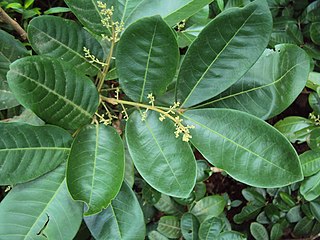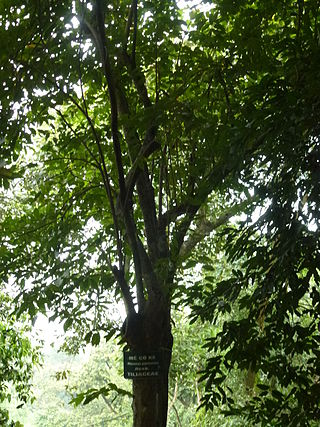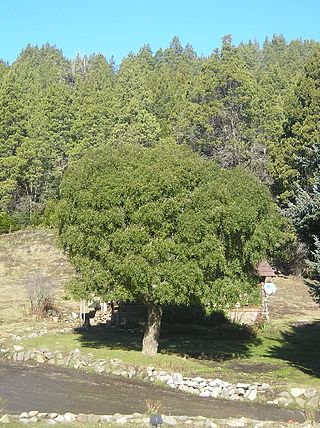
The Celastraceae are a family of 98 genera and 1,350 species of herbs, vines, shrubs and small trees, belonging to the order Celastrales. The great majority of the genera are tropical, with only Celastrus, Euonymus and Maytenus widespread in temperate climates, and Parnassia (bog-stars) found in alpine and arctic climates.

Aglaia is a genus of 121 recognised species of woody dioecious trees in the mahogany family Meliaceae. They occur in the subtropical and tropical forests of Southeast Asia, northern Australia and the Pacific.

Pterospermum is a genus of flowering plants in the mallow family Malvaceae. Its species are tropical trees that range from southern China across tropical Asia.

Sterculia is a genus of flowering plants in the mallow family, Malvaceae: subfamily Sterculioideae. Members of the genus are colloquially known as tropical chestnuts. Sterculia may be monoecious or dioecious, and its flowers unisexual or bisexual.

Microcos is a genus of flowering plants in the family Malvaceae sensu lato or Tiliaceae or Sparrmanniaceae.

Maytenus is a genus of flowering plants in the family Celastraceae. Members of the genus are distributed throughout Central and South America, Southeast Asia, Micronesia, and Australasia, the Indian Ocean and Africa. They grow in a very wide variety of climates, from tropical to subpolar. The traditional circumscription of Maytenus was paraphyletic, so many species have been transferred to Denhamia and Gymnosporia.

Microtropis is a genus of plant in the family Celastraceae. There are about 70 species. They are trees and shrubs, evergreen or deciduous, with oppositely arranged leaves and white or yellowish flowers. Microtropis are distributed in Asia, Africa, and Central America.

Hippocratea is a genus of flowering plants in the family Celastraceae, usually lianas, native to tropical and subtropical North America, South America and Africa.

Loeseneriella is a genus of flowering plants belonging to the family Celastraceae.
Elachyptera is a genus of flowering plants belonging to the family Celastraceae.
Pristimera is a genus of flowering plants belonging to the family Celastraceae.








